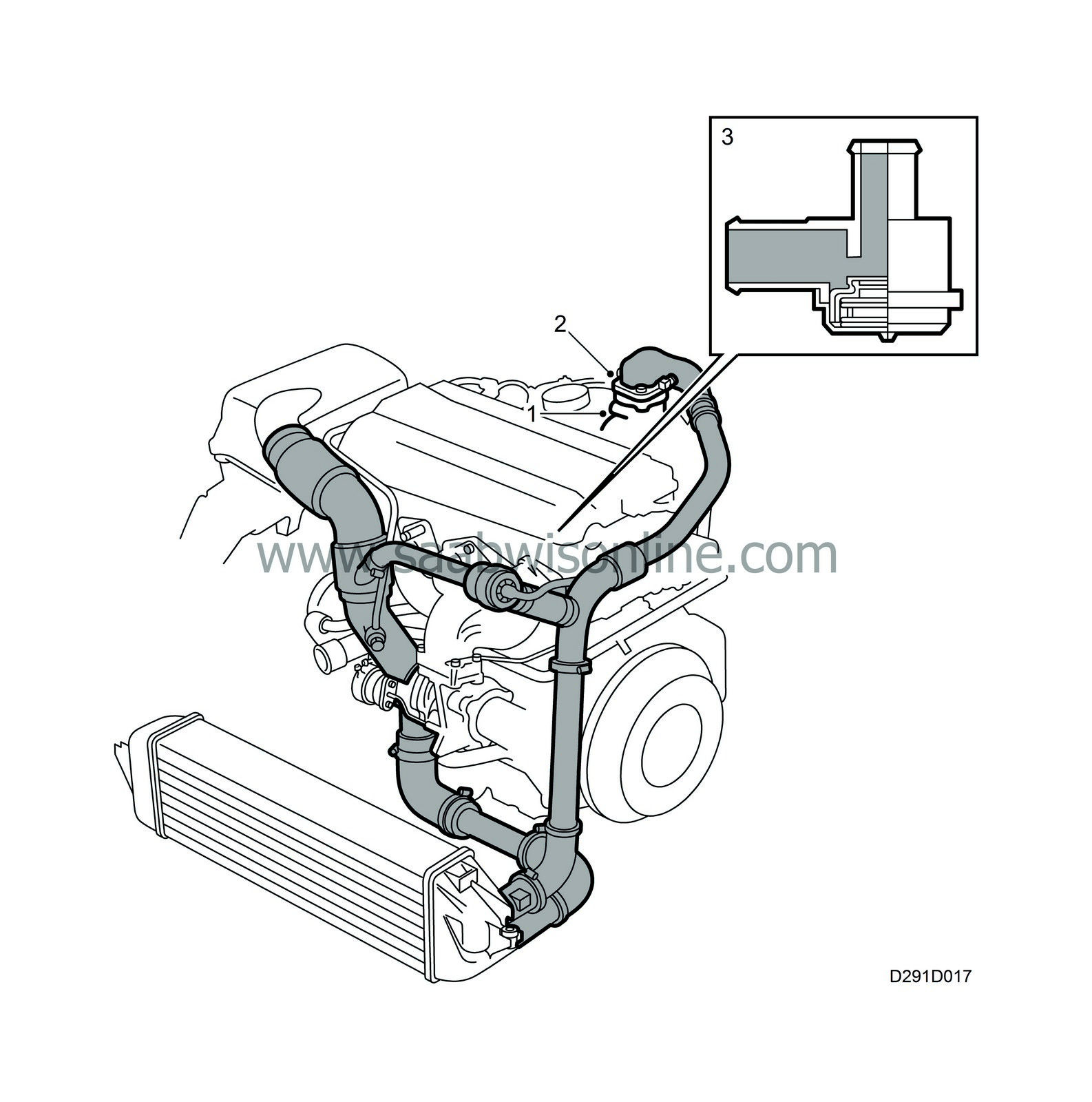PRE-RELEASE
Charge air bypass valve
| Charge air bypass valve |
| 1. |
Overpressure in the intake manifold
|
|
| 2. |
Throttle valve open
|
|
| 3. |
Charge air bypass valve closed
|
|
| With accelerator depressed |
When the turbocharger is working, overpressure builds up in the turbocharger delivery pipe, throttle body and intake manifold. As long as the throttle valve remains open, overpressure will be present on both sides of the bypass valve's diaphragm which is held closed by the force of the integral spring and overpressure from the intake manifold.
| With accelerator released |

| 1. |
Vacuum in the intake manifold
|
|
| 2. |
Throttle valve closed
|
|
| 3. |
Charge air bypass valve open
|
|
When the throttle butterfly closes, a vacuum is quickly created in the intake manifold due to combustion while the overpressure before the throttle butterfly remains the same.
To prevent the pressure in the inlet manifold increasing too quickly, which will cause jerking, the excess pressure before the throttle butterfly valve must be released when the butterfly reopens.
Due to the vacuum in the inlet manifold, a vacuum is also obtained on the spring side of the charge air bypass valve. Since the bypass valve cannot resist the overpressure on the other side of the diaphragm by spring force alone, the valve opens and the overpressure from the delivery pipe and throttle housing is admitted to the intake manifold.



